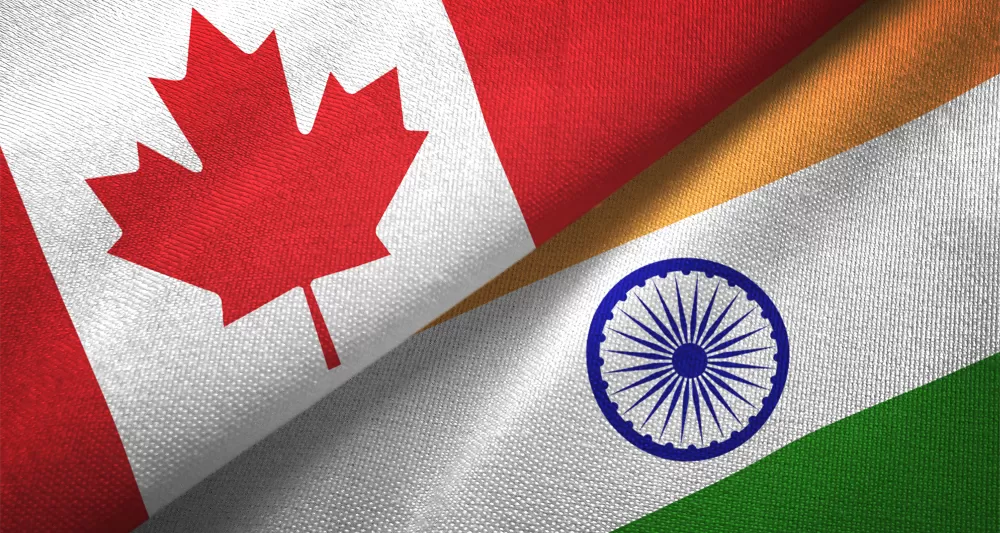Following Canadian Prime Minister Justin Trudeau’s alleging of Indian involvement in the killing of Hardeep Singh Nijjar, who was fatally shot outside a Sikh temple in Canada on June 18, 2023, bilateral relations between India and Canada reached an unprecedented low. Further, their prospects for recovery appear challenging in the foreseeable future. The pivotal event that ignited this diplomatic firestorm between Canada and India is a contemporary illustration of the intricate interplay between normative values, international law, and the demands of globalisation within their bilateral relationship. This article explores how countries may face challenges in balancing moral and legal principles when involved in a globalised world. It considers the implications of international legal norms and codes on the actions of both India and Canada. It explores the mechanisms through which international law can either exacerbate or mitigate tensions in the pursuit of justice and the demands of globalisation. The India-Canada dispute has cast a long shadow over multiple facets of their relationship, from strained diplomacy and disrupted trade to the complex arena of international education, all while stirring political polarisation on both sides and causing disruptions in visa services, tourism and separating Indian-born Canadian citizens from their families back home.
After Prime Minister Trudeau’s statement calling the Indian government out explicitly in the House of Commons, the India-Canada dispute reached a critical juncture. Diplomatic expulsions and the downsizing of embassy staff ensued. The origin of this upheaval can be traced to the removal of a top Indian diplomat at the Indian High Commission in Ottawa on allegations of potential involvement in the Nijjar killing. In a retaliatory move, the Indian government expelled a Canadian diplomat stationed in Delhi, setting the stage for a deteriorating diplomatic relationship. This initial exchange marked the onset of a protracted diplomatic rift, with India subsequently issuing an ultimatum to Canada that demanded the withdrawal of 41 Canadian diplomats out of the total 62, effectively reducing the diplomatic presence to 21 individuals, all unfolding within a remarkably brief period of time: around two weeks. This reflected the dispute’s gravity and its profound impact on bilateral diplomacy. As per a latest update, some Canadian diplomats have been transferred from Delhi to Singapore and Kuala Lumpur.
Furthermore, Canada’s appeal to its allies for support in this declaration has faced mixed responses. The Five Eyes countries abstained from a clear stance, opting to stay out of the fray owing to India’s strategic significance in countering Chinese influence in the Indo-Pacific. Thereby, geopolitical significance has provoked cautious neutrality among some key players.
Amid diplomatic fissures, the Indian government issued a stern statement as a response, accusing the Canadian government of providing a haven for terrorism, which further fuelled tensions, prompting India to halt visa services for Canadians, citing fears of terrorism.
Statistics reveal that Canada is currently home to over 300,000 Indian students, comprising roughly 40% of its entire international student body and representing the second-largest group after Chinese students. Tuition fees for international students can be four to five times higher than those for domestic students, and these fees have become a vital source of revenue for many Canadian postsecondary institutions. In a recent parliamentary session, Canada’s Immigration Minister, Marc Miller, described international students as lucrative assets for the country.
In the lead-up to Prime Minister Trudeau’s speech in the Canadian parliament, trade negotiations with India had halted, leaving a significant question mark hanging over the future of trade relations. The postponement of the “Team Canada” trade mission, led by Intl. Trade Minister Mary Ng, further reveals the intricacies of this dance between diplomacy and trade. The mission was conceived as a unique initiative under Canada’s Indo-Pacific strategy, intended to foster cooperation in sectors ranging from clean technology to agriculture. However, it has become a casualty of the complex geopolitical dynamics that frequently influence international commerce. Trade relations, the lifeblood of the global economy, often become entangled within the intricate web of international politics, exemplifying the interdependence and fragility of modern diplomatic and economic landscapes.
In the India-Canada dispute, it is vital to recognise that this analysis does not advocate for Canada to ignore suspicions or concerns. Instead, it underscores the importance of an evidence-based approach in international diplomacy. Prime Minister Trudeau and the Canadian government should have and should continue to exercise due diligence, especially when making significant claims. The dispute highlights the need for careful consideration, especially when dealing with significant players on today’s world stage. Diplomacy requires a nuanced approach that balances strategic interests with core principles.
The clash between pursuing justice and dealing with the demands of globalisation challenges the principles of international relations. As the repercussions of this dispute continue, the question of “at what cost” remains, raising concerns about the impact of upholding normative values in this context. When not judiciously balanced with the imperatives of globalisation, the relentless pursuit of the rule of law and justice may prove counterintuitive and potentially inflict more harm than good on nations involved in international diplomacy.
Edited by Mahnoor Zaman

